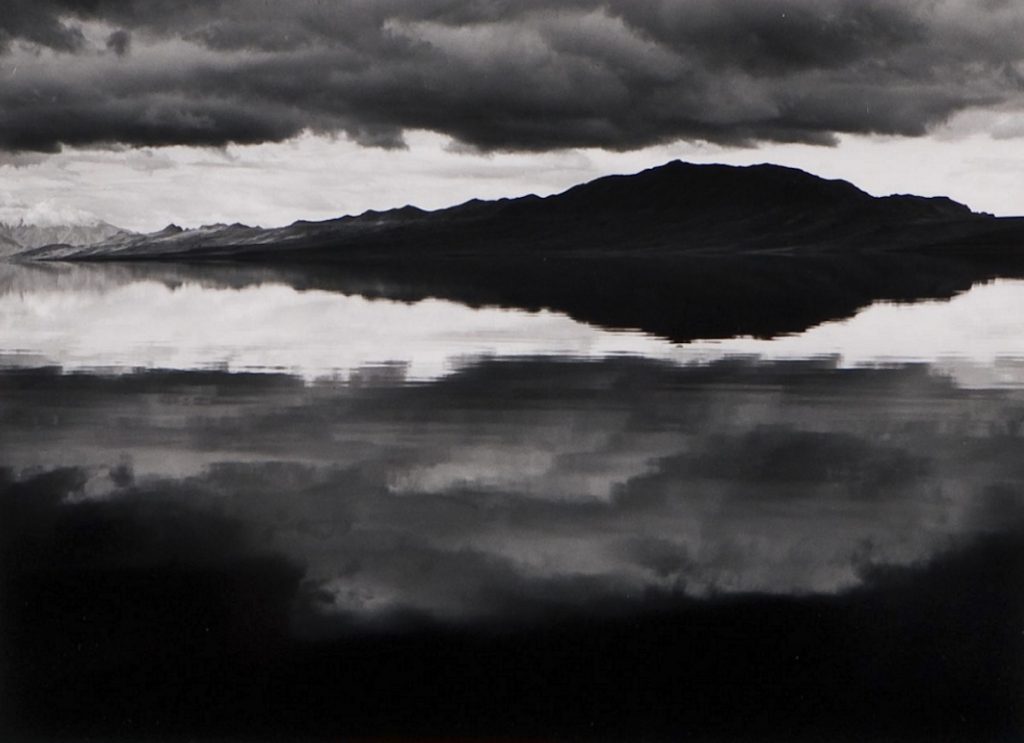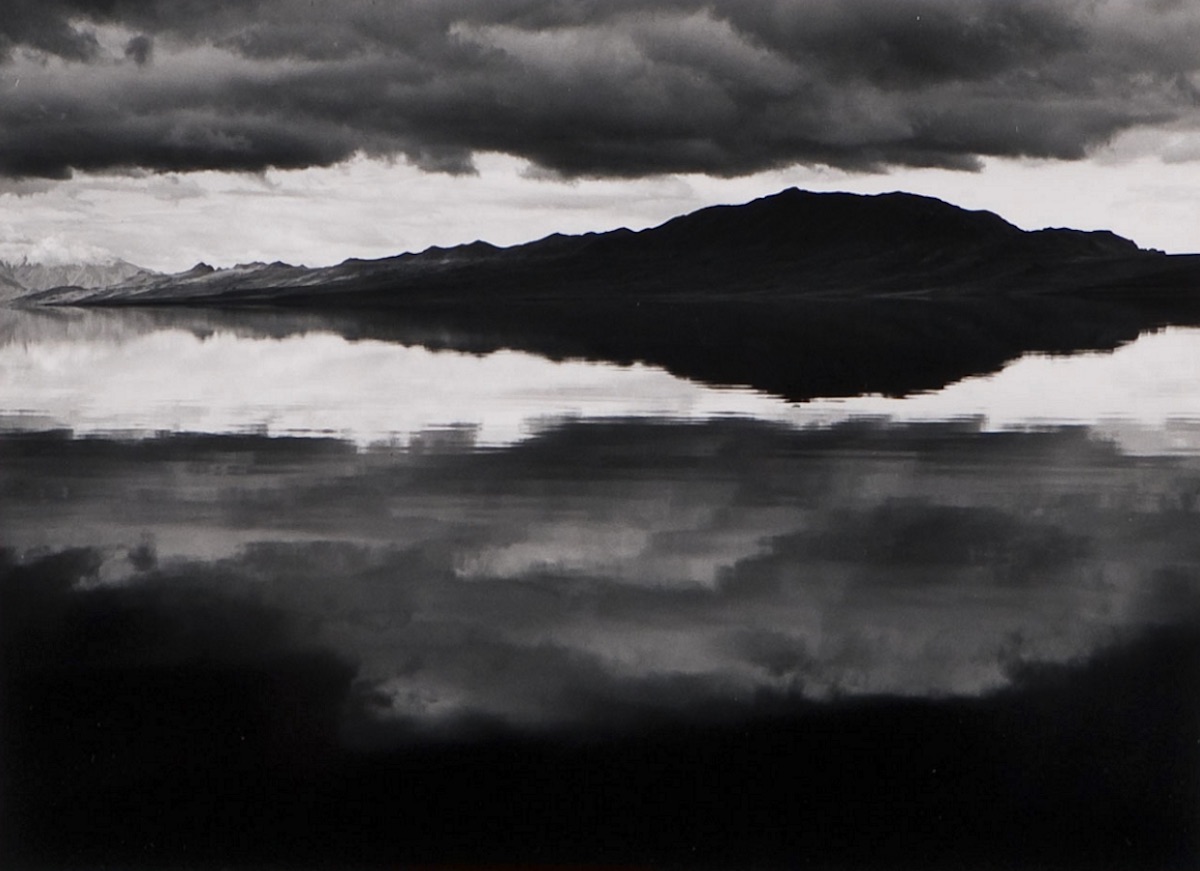
One hundred and twenty-five years ago this year, Utah became the forty-fifth state to enter the Union, ending a long, painful struggle to be so recognized. As state officials ask the public to celebrate the anniversary, the moment is ripe for historians to reflect on the statehood experience. At this commemorative juncture, how might you distill in a few spoken minutes the meaning of statehood? This deliberately open-ended question is designed to prompt broad and diverse reflections of Utah as a geographical place, political entity, and/or cultural community.
Sovereign Lands and Natural Rights
At the time of statehood, Great Salt Lake levels were diminishing well below the historic high observed two decades earlier. Within a decade of state ratification the lake had dropped a full foot below the Saltair gage of 4,197 feet above sea level.
In 1869 Grove Karl Gilbert, the American geologist then studying the Great Salt Lake, had supposed that lake levels were on a steady rise—an increase attributed not to climate but to what he referred to as human agencies. Rather than draw down water in streams and lakes, as one might suppose, irrigation practices—combined with livestock grazing and timber
production—were draining stagnant waters and making streams more efficient, thus augmenting the streams that contributed to the lake’s supply. His field observations prompted him to predict a fairly permanent rise in lake levels. But conditions ten years later caused him to change his
opinion. Just as he had observed in 1880 that Sevier Lake in the central portion of the state was “nearly dry,” so too would be the Great Salt Lake. Again, irrigation was to blame—this time for lake level declines.
That lake levels in the late nineteenth century were dropping seems not to have been a concern to state founders, even though the bed of navigable waters like those of the Great Salt Lake belong to the state where they reside. Under Article 20 of the Utah Constitution, the ownership and control over these waters and their beds had become the responsibility of the new state. The delegates engaged almost no discussion over these “sovereign lands,” and no provisions were made for their management or stewardship. By contrast, the debate over water rights, considered by some delegates to be the most important provision addressed at the convention, was clear: Article 17 recognized and confirmed “all existing rights to the use of any of the waters in this State for any useful or beneficial purpose.” By so doing, delegates encoded a system of water principles and priorities that more than climate itself was responsible for a
diminished Great Salt Lake.
Even though statehood delegates thought not at all about the state of the lake or about water rights beyond prior economic uses, their decisions concerning water law and use have cast a long shadow.

Even though statehood delegates thought not at all about the state of the lake or about water rights beyond prior economic uses, their decisions concerning water law and use have cast a long shadow.
In Utah and across the West water is allocated under the regime of appropriation in which priority irrigators first received what water they needed, then the next tier of irrigators with priority rights used what they needed, and so on until the water had been exhausted. Though early Mormons in Utah treated water as a community resource, by statehood water was treated as private property. Although in 1903 the state legislature declared unappropriated water to be the property of the state, once water is diverted from a stream and put to “some useful or beneficial
purpose” it becomes a privately held “right.” Western states like Utah generally encouraged the full appropriation of waters within their boundaries and made no provisions for water to remain in the streams. A 1897 law provided for the appropriation of water until “said waters are or shall have been diverted from the streams, springs or lakes.”1 The consequence of such a system was that water drawn out of a river or stream would never tumble downstream into the basin where it pooled.
As a consequence, instead of providing for the protection of the lake under its charge, the state constitution codified a system that provided for the full allocation of any freshwater entering the lake. Convention delegates considered, debated, and mentioned a wide range of “rights”: of suffrage, of conscience, of the people, of the individual, of property, of irrigation, of labor, of capital. Nothing in the constitution provided a “right” of water to flow unimpeded into the lake. Not until 1986 did the state recognize rights for instream flows (meaning water left flowing in a natural stream), but these are junior rights and little used. As yet, no rights are afforded to migratory birds that rely on the lake’s freshwater edges as critical habitat, or to microbiotic organisms that provide a foundation for an entire saline ecosystem. Our water system remains essentially tethered to the priorities and cultural values embraced well over a century ago.
Since statehood, the year 1896 has provided a benchmark for some water policy and determinations. A 1931 ruling confirmed that the bed of navigable waterbodies passed to Utah at statehood if they were then navigable. The courts later confirmed state ownership of the lake’s bed in part on the basis that the lake was 30.2 feet deep on the date Utah became a state—and thus navigable by law. More recently, in 2015, the Utah Supreme Court ruled a stretch of the Weber River to be navigable on the basis that the river was commercially navigated at the time of statehood. Another case now winding through the courts similarly relies on conditions existing at statehood.
As a thought experiment, suppose the Utah Supreme Court determined that the proper levels of the lake were those that existed at the time of statehood. As we have seen, water levels were somewhat lower than their historic averages. While this scenario is hypothetical, it highlights the capriciousness of relying on conditions at the time of statehood as the basis for water policy. Any slight decline in lake levels dramatically impacts the lake, since the gradient of the lake bed is so slight. A variance of twenty feet (as we saw from 1963 to 1986, and again from 1986 to the present), results in a shoreline shift of as much as twenty miles. That means that the essential wetlands, playas, and mudflats are either exposed or inundated. Some fluctuations will naturally occur, but the dissection of the lake is primarily a product of our cultural and society choices. Through foresight and persistence over the years, some legislative provisions have
targeted the continued health of this critical ecosystem. But the losses continue to mount; for example, since midcentury wetlands in Utah have declined from 1.2 million acres to only 400,000 acres today. Preventing more losses would mean confronting long entrenched ways of thinking about water and about nature.
Reflecting on statehood, then, means reckoning with entrenched ways of thinking.

Reflecting on statehood, then, means reckoning with entrenched ways of thinking. Looking back on 125 years, we can understandably take satisfaction at how far we have come as a state. That well over four decades passed before being admitted into the Union underscores the relief that Utahns were finally on an “equal footing.” But that footing did not include provisions that considered the rights of nature or considerations that valued water in our natural lakes and rivers, and it did not provide a right to Indigenous peoples who had relied on water sources for generations—to say nothing of other “rights” left out of the constitution. At this juncture, it is worth a public conversation to consider if the rights there encoded still reflect our present-day cultural values.
Unless we push back on long-held procedures and assumptions related to water use, we will likely lose our beloved native lake, just as other terminal lakes around the world have disappeared, like the Aral Sea in Central Asia or California’s Owens Lake. If that happens, we will collectively suffer as a community, and we will have presided over the demise of a thriving, vital ecosystem that exists beyond our human needs. Just as convention delegates deliberated the founding of our state, so too should we work to consider ways to overhaul our water system to serve not solely human purposes but non-human ones as well. We all will surely benefit from such as shift anyway.2
- 1897 Laws of Utah, Ch. LII, p. 219.
- According to a 2020 report of the Great Salt Lake Advisory Council, the loss of the lake will not be because of climate but because of our collective societal choices.
